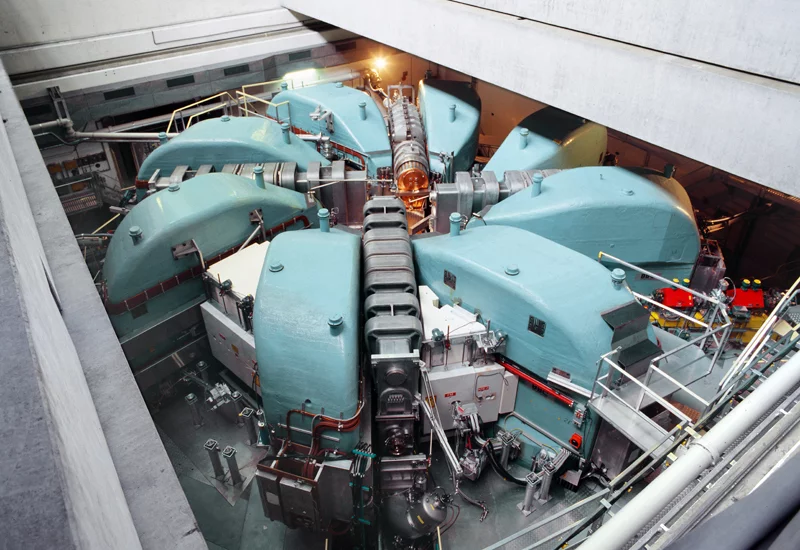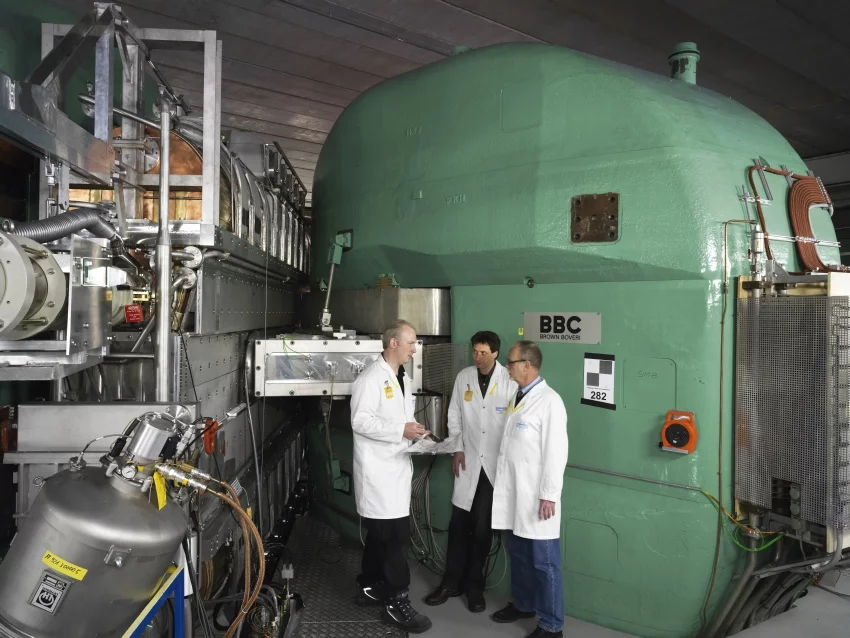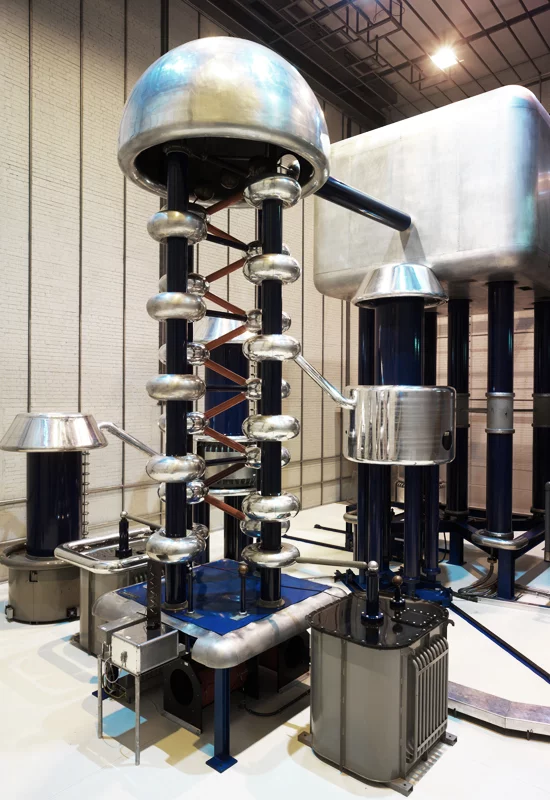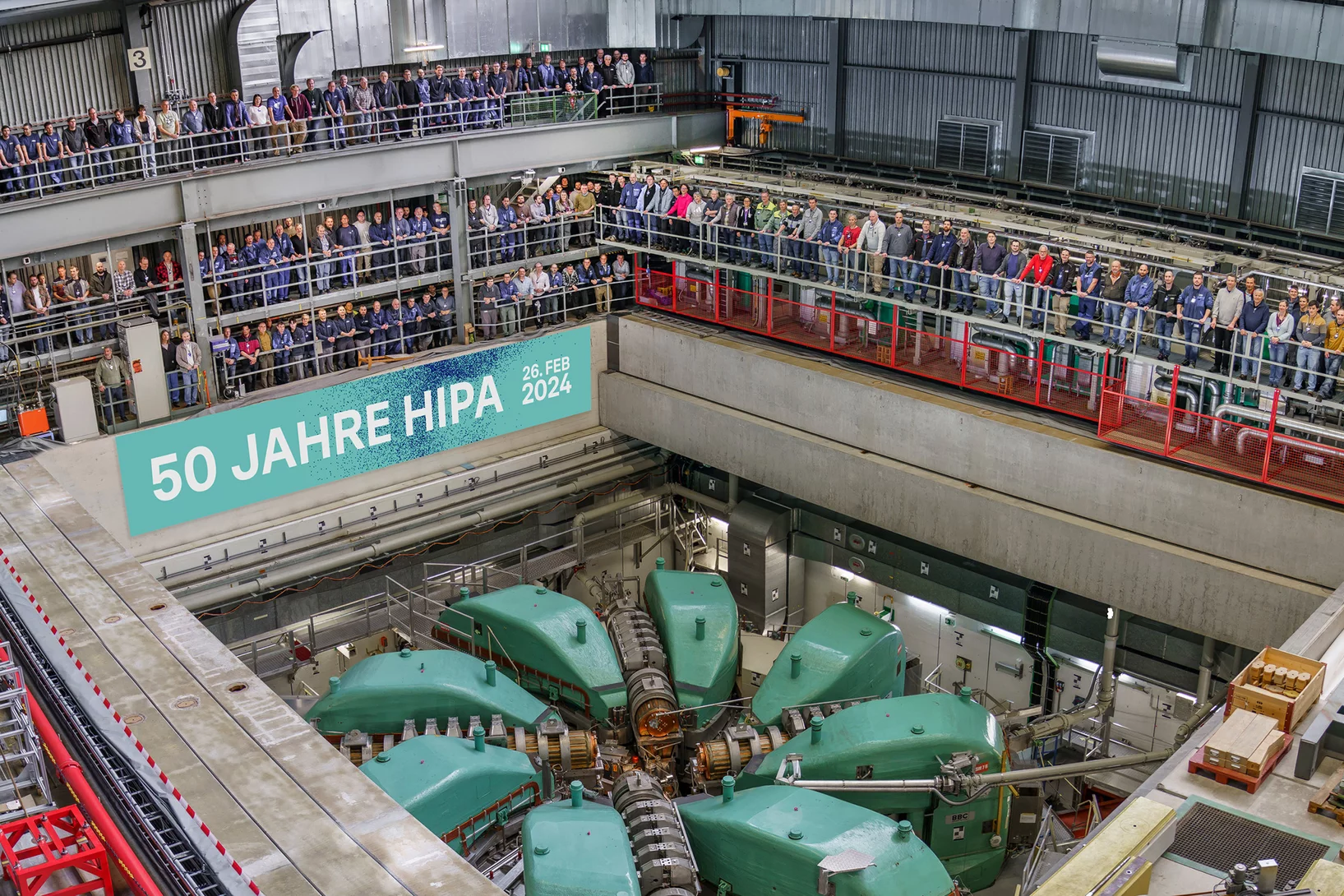The neutrons and muons used for experiments at PSI are all produced by a beam of fast protons colliding with a target – made of lead in the case of the SINQ neutron source and of carbon in the case of the SμS muon source. For that purpose, the protons are accelerated to 80% of the speed of light at PSI's accelerator facility. The facility has been in operation since 1974. After numerous improvements, it provides the most intense proton beam in the world.
Protons are accelerated in three steps
The facility consists of three accelerators in series, which continue to accelerate protons, which have been extracted from a source made up of hydrogen atoms, up to their terminal speed. The core of this facility is the large ring cyclotron with a diameter of approximately 15 metres, in which protons are accelerated to their terminal speed of almost 80% of the speed of light (equivalent to a kinetic energy of 590 MeV). Protons fed into the large ring cyclotron already have a speed of approximately 37% of the speed of light (72 MeV), which they reach in a pre-accelerator – Injector II, itself a smaller ring cyclotron. A Cockcroft-Walton accelerator, which also contains the proton source, is used as the first stage from which protons are fed into Injector II.
At the heart of the accelerator facility – the ring cyclotron
Powerful magnets in a ring cyclotron ensure that the accelerated particles are constrained to move along a circular path and that they remain compressed in bunches. These beam bunches are accelerated in stages, with the powerful electrical fields building up every time particles pass through an accelerator cavity and giving them an additional impulse. Several accelerator cavities of this kind are positioned between the magnets in the path of the beam. The principle components of the large PSI ring cyclotron are eight sector magnets and four accelerator cavities. The proton beam from the smaller ring cyclotron is fired into the centre of the large ring cyclotron and accelerated in a spiral track over 186 revolutions to its terminal velocity.
Since 2008, the PSI accelerator facility has been generating a proton beam of 2200 microamperes, hence once more breaking its own world record, which it has held since 1994 and has broken repeatedly. A beam intensity of 100 microamperes had been planned at the project planning and design stage, and in 1970 this was still regarded by many as unrealistic.
Further information
- Proton therapy: An important applications of fast protons at PSI
- Challenged in outer space: There is a second proton accelerator facility at PSI. At its core is a supraconducting cyclotron which accelerates protons for the treatment of certain cancers (proton therapy). However, as a side application, the proton beams are also used to test aerospace components(link is external) of the ESA (film on YouTube).
- SINQ neutron source
- SμS muon source
Both sources are powered by a beam from the proton accelerator
News
IMPACT: Upgrade at PSI research facility approved
Financing for renovations to PSI’s proton accelerator facility has been approved by the Swiss Parliament.
IMPACT for Swiss society
World leader in muons and in production of medical radionuclides: The far-reaching significance of the planned upgrade.
Protons and other particles: The HIPA facility turns 50
Since 1974 HIPA has been accelerating protons for research.






